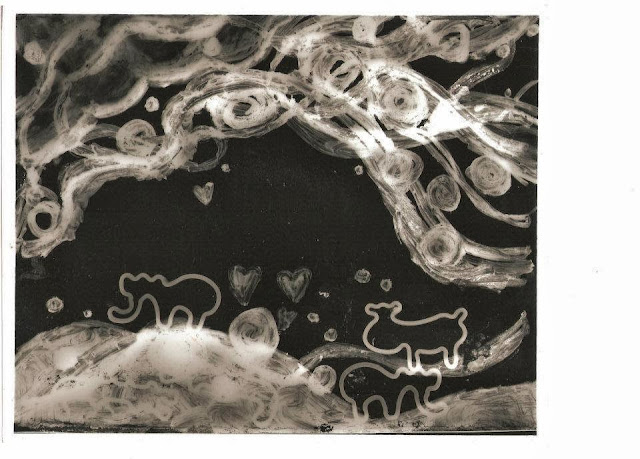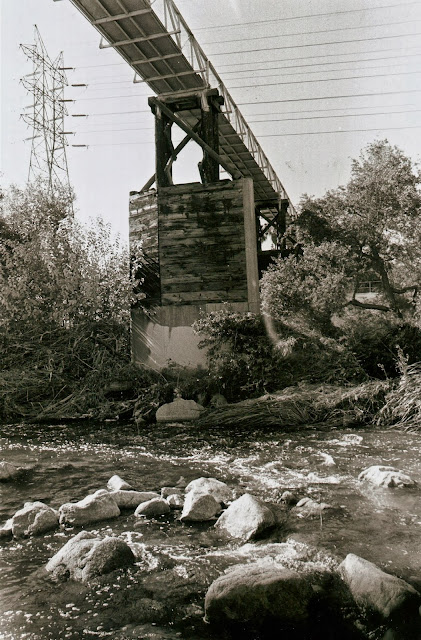In the basement of the Chemistry Building at City College, students have been practicing an art almost 200 years old. It is a time consuming practice done with love, devotion and pure dedication. It yields many varied results that can be viewed from all perspectives. These visionaries spend hours trying to perfect the art. It seems like magic as they do it, always in the dark.
The art of photography in its original analog form is a common interest among the students at City College. It is so popular that students scramble to get into the photo classes before they fill up. Many are in for a surprise when they realize how much work it is, but find that it is a discipline that is very rewarding and an important starting point for any serious photographer.
Students spend many hours each semester, immersed in the details of how to develop and process film in a completely dark room, make a perfect photographic print in a mostly dark room and how to put together a perfect composition for all to admire and enjoy in the light.
It is no easy task.
Photography professor Linda Okamura tells students to repeat the process. Any mistake in processing your film could require you to shoot it over again. Try it with this filter and a few more seconds in the enlarger. Many hours and 8x10 pieces of photo paper later, a photography student might have a print worthy of a desirable letter grade.
 |
|
Micheltorena House |
In November 2011, Professor Okamura had changed her syllabus. Kodak, a world famous 127-year-old photographic film company, hit hard times after some poor business decisions, including a botched deal with Hewlett-Packard. It cost them around $25 million. Kodak recently filed for Chapter 11 and lost their CEO, Antonio Pérez.
In October 2011, they discontinued their line of KODAK PROFESSIONAL PLUS-X 125 Film, a medium-speed, continuous-tone panchromatic film used commonly in analog photography classes. Kodak had begun to show signs of weakness--in an ever-changing industry.
Sad as it was, it did not stop the dark room from running.
Other companies such as Ilford have continued producing products for the darkroom, making the slow death of Kodak a non-issue. According to Eric Joseph, Freestyle Photo Supplies & Gallery Manager, film photography will continue without Kodak because the art itself is still desired strongly within a growing market, fueled mostly by community colleges and universities that have film photography programs with active darkrooms.
 |
L.A. River Rocks
|
City College is no different, where many students are beginning to flourish as noteworthy professional photographers. A recent exhibit at Freestyle Photo called “Emerging 7” included the work of LACC student photographer, Elizabeth Delgado. Her work is meticulous, sharp and beautiful. She explained the importance of beginning with film as a photographer.
“You see the picture come to life,” Delgado says. ”You are there developing it. You watch the image you worked so hard on appear on paper. It’s kind of like magic.”You need to start at the beginning to develop your skills. It’s better because it’s not so fast as a digital SLR. It makes you think about what you shoot. [Shooting on] film is not cheap but definitely worth it.”
This semester, scores of students are focused on digital photography, but for some, their hearts pine to be in the darkroom. There is a shared connection with other students in the darkroom that is more intriguing and gratifying than staring at a screen in a computer lab.
The darkroom creates a sense of community. Photographers make friends faster while working side by side in the dark room, faster than anywhere else on campus. Some of those friends become like brothers and sisters. Students learn and grow together as artists in a dark personal bubble.
Eric Joseph, manager and instructor at Freestyle Photo shared his insights.
 |
| Tree on Maltman |
“The interest in historical process is greater than it’s ever been. One of the reasons analog photography is still continuing, is that digital photography is sterile. People love the environment of the darkroom,” he says. “It’s their little temple. They enjoy creating things that are hands on. There’s a camaraderie that comes with it that is missing in a digital lab.”
With the digital lab process, the fun is still there but slightly muted in some way. All the artists are engrossed in their personal image. The camaraderie is lost. It’s only social if you are out in the city shooting pictures with other digital photographers. If you work alone, you may begin to feel the isolation that is so often present in the world of digital.
Digital adds different values in the process and allows instant gratification for each photo, viewable immediately on the small LED screen seconds after shooting the picture, quite a contrast to the four-hour process for one picture in analog photography.
Professor Daniel Marlos, Media Arts Chair at City College said, “I believe and I think that a lot of my contemporaries in the world of photo education today, believe that when students study traditional analog photography with film and darkroom practices, it’s only going to make them stronger when it comes to the competency that will they have working as professional photographers.”
 |
Griffith Park
|
Experience in the darkroom creates a broader understanding of the technical aspects of creating a perfect photo, digital or not. The idea of combining the art of digital and film is a reminder that both arts are not mutually exclusive. They are like a yin and yang working together in different ways to create a harmonious field of artistic expression using different mediums.
As a result, the digital age has been good to the field of photography and has caused many people to take interest. Most people rely technologies that are easy to use and at our fingertips at any given moment.
For example, everyone has a computer and camera in their pocket in the guise of a cellphone. Companies like Facebook and Twitter teamed up with Instagram and Hipstamatic, popular cellphone applications that make it easy to create instant photographic replicas of popular old style cameras, such as the Holga used in the early 1980s.
“Everyone has been trying to copy the sensitivity and unique image quality of the Holga camera…” says Joseph. These commonly used phone applications have created an interest in the actual film Holgas, available at Freestyle Photo and many other camera shops across town.
“People ask why we carry the real Holga here at Freestyle Photo. The Holga camera is part of a greater strategy to keep film alive,” Joseph says. “Anyone who buys that camera and uses it is shooting a roll of film. The more film that is sold, the more film we can purchase from manufacturers to keep analog photography alive.”
 |
Tree in Griffith
|
Walking through the photo-lined hall of Freestyle Photo, the work of many student photographers comes into focus. A statue of a mother and daughter seems to come to life, titled Blind Love by Ethan Edward. A few steps further a woman boxer seems ready for her next round, a sexy sleek creation by Mirella Zepeda. These photographers spent hours in the darkroom perfecting each image. They use many tools to slowly produce just one perfect print. After tirelessly working, they are gratified to know anyone can dive into the worlds they create, always there for anyone to enjoy and experience.
Our quick-paced society continues to become more involved and interested in digital photography, while silently throwing a rope to its analog predecessor. Photography is an art that shows no signs of slowing down.
In an age where things are expected to happen quickly, the darkroom’s amber light is still glowing bright. People desire the slower process not only as a form of expression, but as a way to stop the constant motion of the world around them. In the darkroom, anyone can create something that they can call theirs from start to finish. Photographers will still be doing it in the dark for years to come.






















































No comments:
Post a Comment